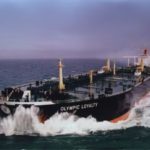Clean Tanker west of Suez markets braced for continued demand slump for oil products

West of Suez clean tanker shipowners will likely face more pain in the upcoming quarter as tightened coronavirus restrictions point to a continued downturn in oil product demand in the EMEA region, though some are optimistic that East of Suez markets could retain a volume of tonnage, particularly Long Range tankers, to provide a modicum of support for smaller vessel classes.
Shipowners have had to take stock of the fact that traditionally strong winter months in the oil product market will not show such returns heading into the New Year. A number of key influencing factors in the fourth quarter of 2020 will continue to pose questions for shipowners’ prospects moving through the first quarter of 2021.
Transatlantic arbs to return?
One of the big talking points in West of Suez markets in the fourth quarter of 2020 was the effective shutdown of ultra-low sulfur diesel exports from the US Gulf hampering Medium Range tanker prospects for back haul shipments once loading cargoes on the most liquid trade for MRs of UK Continent-US Atlantic Coast. This led to persistent ballasters from key basins such as the US Atlantic Coast, West Africa and Brazil back to the continent or the Mediterranean as it remained the only active hub for oil product cargoes, due to refinery cuts in the US Gulf reducing opportunities for a stronger triangulation across the Atlantic.
As 2021 commences, US Gulf refiners have so far held a cautious stance on the prospects of revamping production due to the ongoing demand destruction caused by the coronavirus pandemic, and should this remain the case throughout the first quarter, MRs are projected to be continuously under pressure as a result.
Freight indications for UK Continent-US Atlantic Coast shipments basis 37,000 mt averaged $12.26/mt in Q4 2020, while US Gulf-UK Continent shipments basis 37,000 mt averaged $11.94/mt.
The briefly opened arb of European ULSD shipments to the USAC will likely not provide a fundamental support factor for improved rates should it remain open as 2021 progresses. UKC-USAC shipments of ULSD reached a record high of 586,000 mt in November, but a mixture of both MR and LR tanker tonnage was exploited by charterers to fulfil shipment requirements. This has been the underlying obstacle for firming markets in the previous quarter — the capacity for charterers to upgrade or downgrade stem for the most economically viable tonnage on a $/mt basis.
Short-haul markets to remain under pressure
In terms of smaller vessel classes, Handysize markets arguably faced the most pressurized conditions of all in the final quarter, and there are questions about how much upside potential they have as the first quarter of the year progresses.
In the continent Handysize market, all eyes will turn to the development of the ice premium early on, and how long this could be sustained moving forward. The key Baltic ports of Primorsk, Ust Luga, Vysotsk, Porvoo and St Petersburg will all likely require ice class vessels for loading from January, and this could give the Handysize and to some extent the MR market a window for firmer indications in the first months of the year.
A less optimistic outlook has been adopted in the Mediterranean, with Handysize rates immediately put under pressure at the turn of the year having transitioned rapidly to lower flat rates in 2021.
Freight indications for cross-Med shipments, basis 30,000 mt, averaged just $4.80/mt in Q4 2020, from $11.86/mt in Q4 2019.
Traditional upside factors such as adverse weather conditions provided virtually no sustained support in the last quarter, and market participants do not expect them to play a major role in the first quarter, citing tightened lockdown restrictions across Europe and the Mediterranean as the obstacle for end-user demand and therefore rising rates.
“Even with a ramp-up in vaccinations, this will have no effect on the market this quarter if countries remain in this situation,” a charterer said.
LRs to benefit and provide support?
Floating storage inquiries in the last quarter of 2020 flickered and faded as a small window of opportunity for storage of ULSD on the back of a workable contango saw a number of fixtures on LR tankers. But LR rates at the start of the year have shown signs of promise in the market, hitting multi-month highs for Asia-Pacific rates as tonnage has tightened
Freight indications for Mediterranean-Japan shipments of naphtha on LR2s have witnessed four-month highs at the start of 2021, with Med-Japan basis 80,000 mt last assessed at a $2.4 million lump sum – its highest level since Sep.25, 2020, while rates for Med-Japan basis 60,000 mt were last assessed at $1.85 million — the highest level since Sept. 23.
LR shipowners say that more opportunities in the East of Suez markets have enticed them to make the journey, and some suggest that could provide top-down support to smaller vessel classes in the West.
At best this will only provide moderate support to the West of Suez markets. But as vaccinations continue to ramp up, market participants are hopeful that the soft underbelly of the market will sooner rather than later subside.
Source: Platts

 Hellenic Shipping News Worldwide Hellenic Shipping News Worldwide, Online Daily Newspaper on Hellenic and International Shipping
Hellenic Shipping News Worldwide Hellenic Shipping News Worldwide, Online Daily Newspaper on Hellenic and International Shipping






















 PG-Software
PG-Software